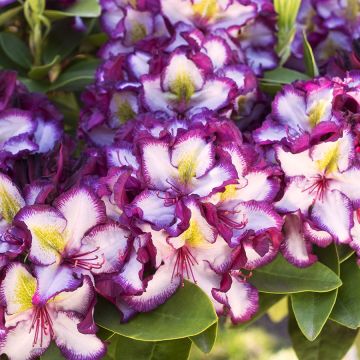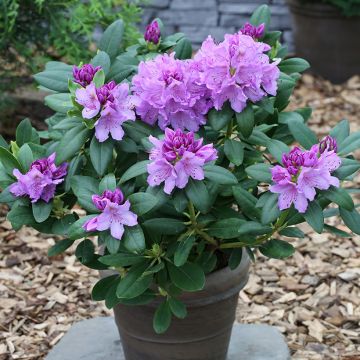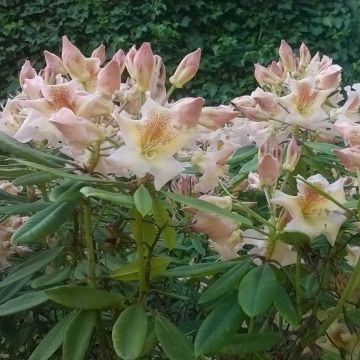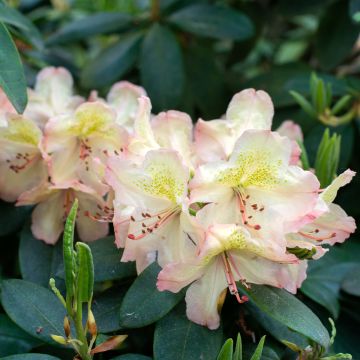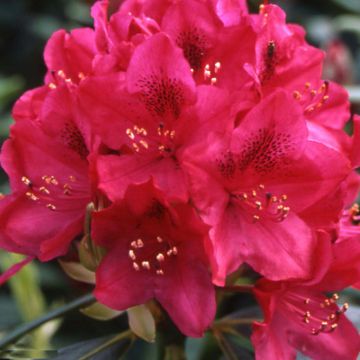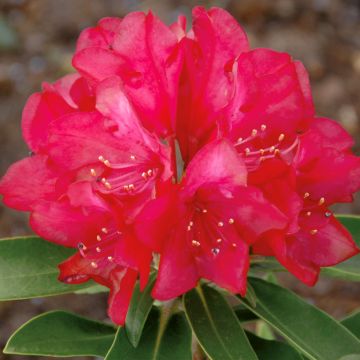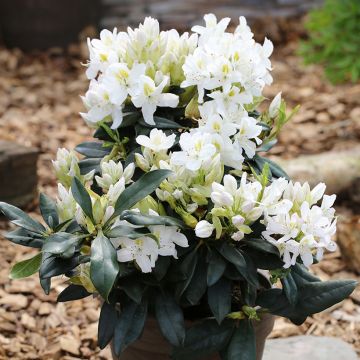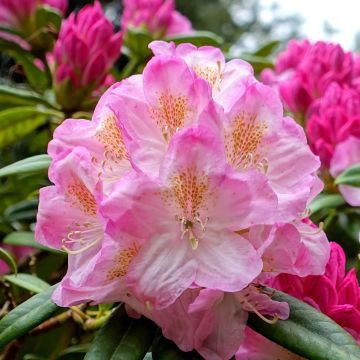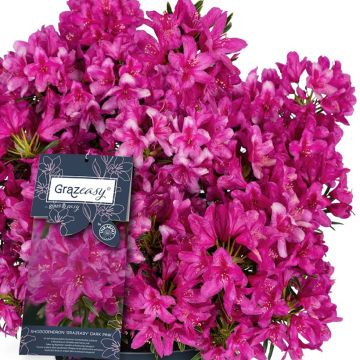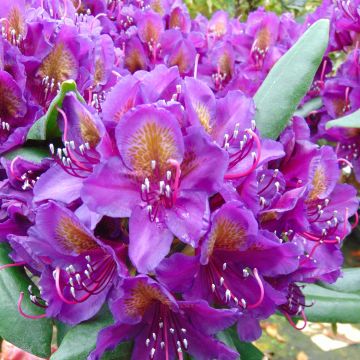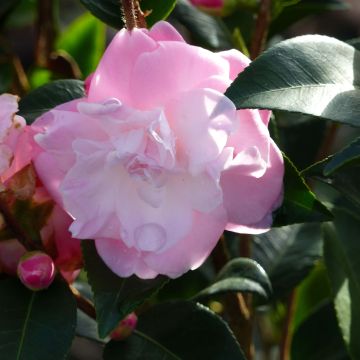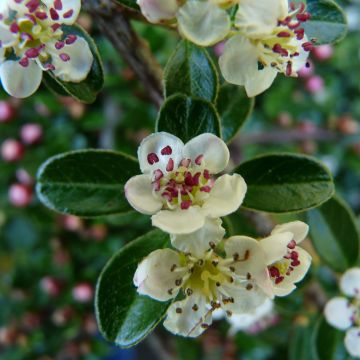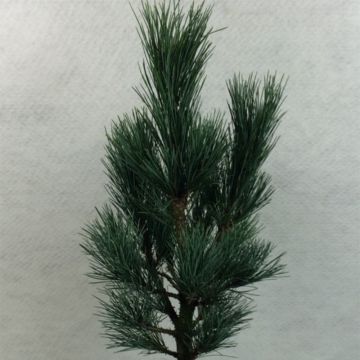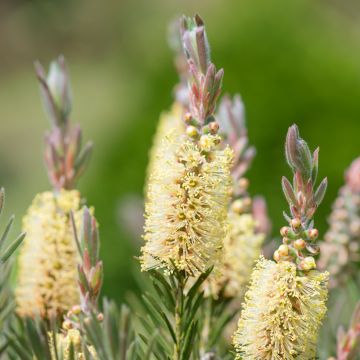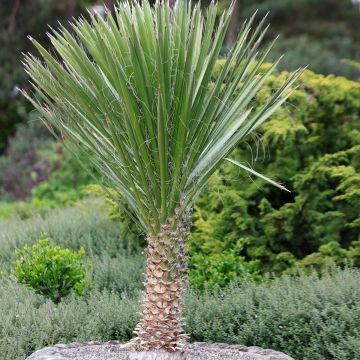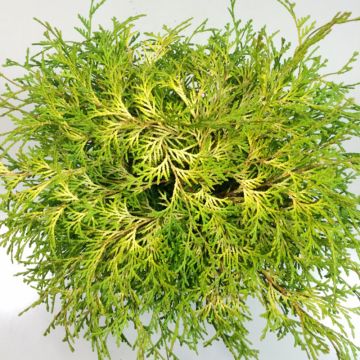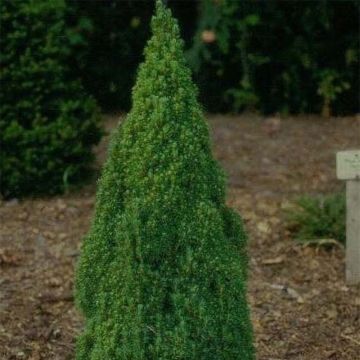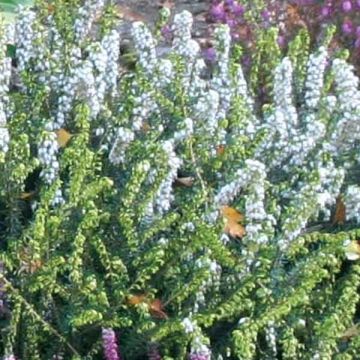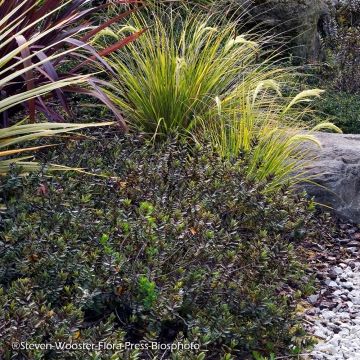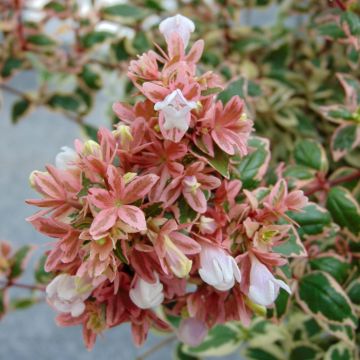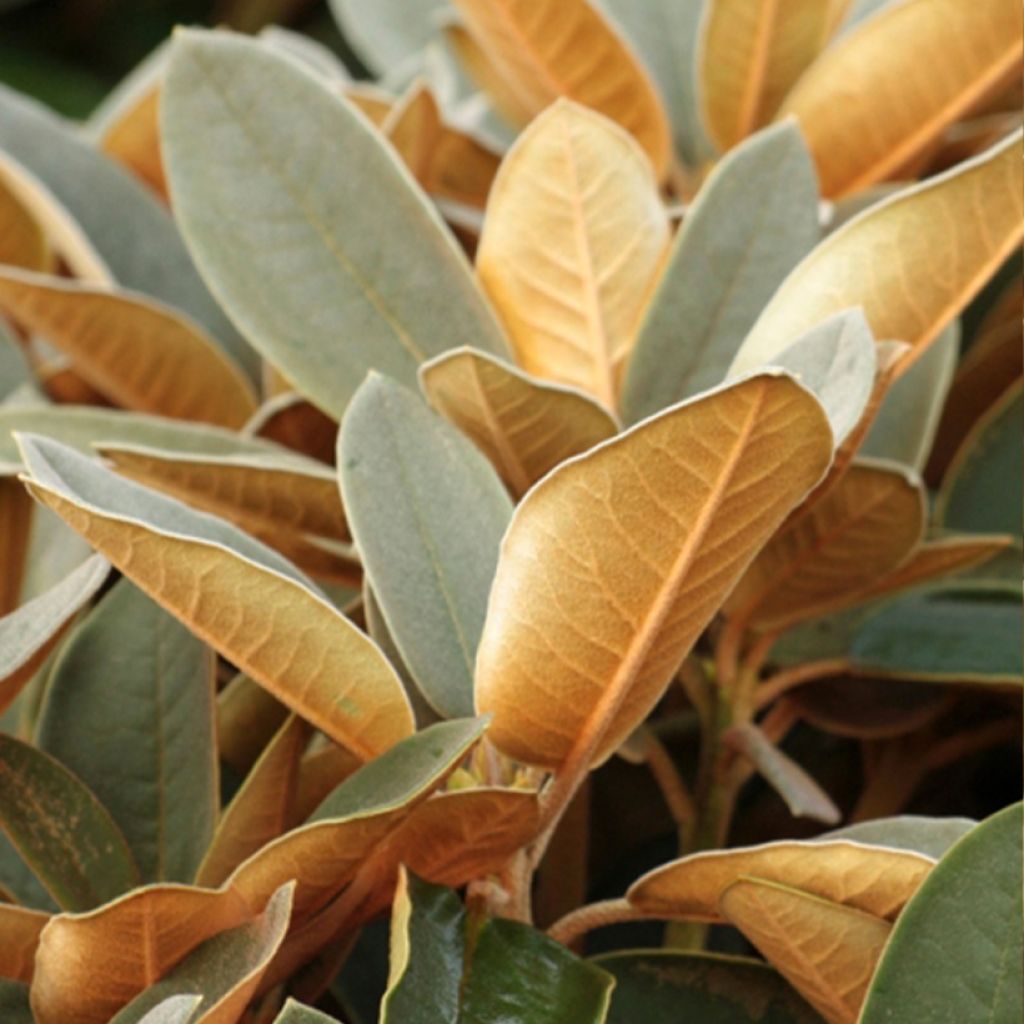

Rhododendron Easydendron Special Dane
Rhododendron Easydendron Special Dane
Rhododendron x hybrida Easydendron® INKARHO® Special Dane
Rhododendron
This plant carries a 24 months recovery warranty
More information
We guarantee the quality of our plants for a full growing cycle, and will replace at our expense any plant that fails to recover under normal climatic and planting conditions.
From €5.90 for pickup delivery and €6.90 for home delivery
Express home delivery from €8.90.
Does this plant fit my garden?
Set up your Plantfit profile →
Description
Rhododendron Easydendron® Inkharo® Special Dane is a variety that offers superb flowering with large flowers with a white corolla, tinged with pale pink on the outside. The dark green foliage provides a beautiful setting, while the young shoots display a silvery colour before darkening. Being low to medium-sized, this bush forms a superb, highly branched clump, as wide as it is tall. It is part of the Inkharo range, which includes hybrids that are more tolerant to limestone and clay in the soil than traditional varieties. This hardy, easy-to-grow Rhododendron will thrive in a border, at the edge of trees that provide the dappled shade it appreciates.
Rhododendrons are plants of the Ericaceae family, just like heathers, Kalmias (Mountain Laurels), or the superb and largely unknown Oxydendron arboreum. The history of Inkharo Rhododendrons, slightly revolutionary plants, began in Germany over 20 years ago. The discovery of a Rhododendron naturally growing in a chalk quarry made it possible to consider grafting different varieties onto its extraordinary root system. The shrubs obtained by this method tolerate a wide range of soils with a pH ranging from 4.5 to 6.5, as long as they are loose, fertile, moist, and not excessively calcareous.
Special Dane is a hybrid obtained by crossing Rhododendron bureavii, a small Chinese species from the Yunnan mountains, whose foliage is covered with a rust-coloured down, and Rhododendron pachysanthum, from Taiwan, slightly taller but just as hairy on both sides of the leaves. It is no wonder that the result of their crossbreeding also shines with the beauty of its evergreen foliage. Slow-growing Special Dane forms a compact, highly branched shrub, 1.25 m to 1.50 m in height and just as wide after ten years of cultivation. Its dense vegetation consists of dark green foliage, with tough elliptical leaves of a very regular shape, pointed at the tip, and of medium size, about 7 to 10 cm long. This dark vegetation provides a perfect setting to highlight the spring flowering. The intense pink flower buds open up into superb white flowers in May. The corollas are formed by five petals fused at the base and then opening into a trumpet shape, with a slightly wavy rounded edge. The outer side of the corolla remains slightly pink, giving the inflorescences a romantic charm. A cluster of stamens with brown tips emerges from the heart of the flower, accompanied by a protruding pistil, with a raised tip, in yellow. Reaching a diameter of 10 cm for some, these large flowers are grouped in clusters at the end of the branches, covering a good part of the dark foliage on which they contrast beautifully.
In June, new young shoots appear, with a very ornamental silvery surface, giving the plant a two-tone appearance in comparison to the leaves of previous years. The juvenile leaves evolve towards a colour ranging from bronze to light brown. At maturity, they eventually turn dark green.
Rhododendron Special Dane will allow many gardeners whose soil is not suitable for classic Rhododendron varieties to indulge themselves. This hybrid can thrive in neutral soil, provided it finds moisture and a slightly shaded exposure, in which its foliage will be most decorative. It will thus be possible to associate it with many plants that are not necessarily acid-loving. In the foreground, Scolopendrum ferns will create a splendid contrast of colours, with their entire fronds of a beautiful glossy green. In the background, Viburnum bodnantense Dawn is a winter flowering Viburnum, with clusters of extremely fragrant small pink flowers that bloom from December to February. Its autumn vegetation is also spectacular when it turns red and purple, creating a superb harmony of colours with the dark green of the Rhododendron. Just add one or two Hydrangeas, like Hydrangea aspera Hot Chocolate, a variety that is still not widely spread despite its ornamental qualities. In spring, the foliage emerges in chocolate purple colours, which then turn into dark green in summer before changing to orange-yellow in autumn! Its flowering ranges from pale pink to lavender and lasts from July to September...
Report an error about the product description
Plant habit
Flowering
Foliage
Botanical data
Rhododendron
x hybrida
Easydendron® INKARHO® Special Dane
Ericaceae
Rhododendron
Cultivar or hybrid
Other Inkarho Rhododendrons
Planting and care
Plant Rhododendron Inkarho Special Dane in a semi-shaded position, protected from cold and drying winds, in moist, loose, fertile soil. This range of Rhododendrons accepts soils that are less acidic than other varieties, with pH levels ranging from 4.5 to 6.5, meaning neutral to slightly alkaline soils (in reality, it is the active lime content that poses a problem...).
Dig a hole three times larger than the pot volume. Soak the root ball in water for fifteen minutes to ensure it is well saturated, and plant the bush at the collar level, in a nourishing mix of leaf compost, gravel or pumice, and loamy or topsoil, as Inkarho Rhododendrons are hungry plants. Water generously and keep the soil moist during summer. Azaleas and Rhododendrons have a rather shallow root system. Therefore, they are sensitive to long periods of drought. It is recommended to enrich the soil with humus and provide abundant watering during dry periods. Apply a layer of chipped pine bark or mulch around the base of the bush every spring to retain soil moisture while maintaining a slightly acidic pH. Maintenance involves removing faded flowers after flowering and cleaning out dead branches.
Azaleas and Rhododendrons can sometimes be attacked by weevils that eat the edges of the leaves and rootlets, as well as the infamous "rhododendron lace bug," which fortunately does not often cause severe damage. There are effective natural solutions against weevils. Yellowing of the leaves (chlorosis) in Rhododendrons indicates poor assimilation of iron in the soil and can lead to premature plant death. While lime is generally the cause, poorly drained soil or a deeply planted root ball can also explain the phenomenon.
Planting period
Intended location
Care
This item has not been reviewed yet - be the first to leave a review about it.
Evergreen shrubs
Haven't found what you were looking for?
Hardiness is the lowest winter temperature a plant can endure without suffering serious damage or even dying. However, hardiness is affected by location (a sheltered area, such as a patio), protection (winter cover) and soil type (hardiness is improved by well-drained soil).

Photo Sharing Terms & Conditions
In order to encourage gardeners to interact and share their experiences, Promesse de fleurs offers various media enabling content to be uploaded onto its Site - in particular via the ‘Photo sharing’ module.
The User agrees to refrain from:
- Posting any content that is illegal, prejudicial, insulting, racist, inciteful to hatred, revisionist, contrary to public decency, that infringes on privacy or on the privacy rights of third parties, in particular the publicity rights of persons and goods, intellectual property rights, or the right to privacy.
- Submitting content on behalf of a third party;
- Impersonate the identity of a third party and/or publish any personal information about a third party;
In general, the User undertakes to refrain from any unethical behaviour.
All Content (in particular text, comments, files, images, photos, videos, creative works, etc.), which may be subject to property or intellectual property rights, image or other private rights, shall remain the property of the User, subject to the limited rights granted by the terms of the licence granted by Promesse de fleurs as stated below. Users are at liberty to publish or not to publish such Content on the Site, notably via the ‘Photo Sharing’ facility, and accept that this Content shall be made public and freely accessible, notably on the Internet.
Users further acknowledge, undertake to have ,and guarantee that they hold all necessary rights and permissions to publish such material on the Site, in particular with regard to the legislation in force pertaining to any privacy, property, intellectual property, image, or contractual rights, or rights of any other nature. By publishing such Content on the Site, Users acknowledge accepting full liability as publishers of the Content within the meaning of the law, and grant Promesse de fleurs, free of charge, an inclusive, worldwide licence for the said Content for the entire duration of its publication, including all reproduction, representation, up/downloading, displaying, performing, transmission, and storage rights.
Users also grant permission for their name to be linked to the Content and accept that this link may not always be made available.
By engaging in posting material, Users consent to their Content becoming automatically accessible on the Internet, in particular on other sites and/or blogs and/or web pages of the Promesse de fleurs site, including in particular social pages and the Promesse de fleurs catalogue.
Users may secure the removal of entrusted content free of charge by issuing a simple request via our contact form.
The flowering period indicated on our website applies to countries and regions located in USDA zone 8 (France, the United Kingdom, Ireland, the Netherlands, etc.)
It will vary according to where you live:
- In zones 9 to 10 (Italy, Spain, Greece, etc.), flowering will occur about 2 to 4 weeks earlier.
- In zones 6 to 7 (Germany, Poland, Slovenia, and lower mountainous regions), flowering will be delayed by 2 to 3 weeks.
- In zone 5 (Central Europe, Scandinavia), blooming will be delayed by 3 to 5 weeks.
In temperate climates, pruning of spring-flowering shrubs (forsythia, spireas, etc.) should be done just after flowering.
Pruning of summer-flowering shrubs (Indian Lilac, Perovskia, etc.) can be done in winter or spring.
In cold regions as well as with frost-sensitive plants, avoid pruning too early when severe frosts may still occur.
The planting period indicated on our website applies to countries and regions located in USDA zone 8 (France, United Kingdom, Ireland, Netherlands).
It will vary according to where you live:
- In Mediterranean zones (Marseille, Madrid, Milan, etc.), autumn and winter are the best planting periods.
- In continental zones (Strasbourg, Munich, Vienna, etc.), delay planting by 2 to 3 weeks in spring and bring it forward by 2 to 4 weeks in autumn.
- In mountainous regions (the Alps, Pyrenees, Carpathians, etc.), it is best to plant in late spring (May-June) or late summer (August-September).
The harvesting period indicated on our website applies to countries and regions in USDA zone 8 (France, England, Ireland, the Netherlands).
In colder areas (Scandinavia, Poland, Austria...) fruit and vegetable harvests are likely to be delayed by 3-4 weeks.
In warmer areas (Italy, Spain, Greece, etc.), harvesting will probably take place earlier, depending on weather conditions.
The sowing periods indicated on our website apply to countries and regions within USDA Zone 8 (France, UK, Ireland, Netherlands).
In colder areas (Scandinavia, Poland, Austria...), delay any outdoor sowing by 3-4 weeks, or sow under glass.
In warmer climes (Italy, Spain, Greece, etc.), bring outdoor sowing forward by a few weeks.

































